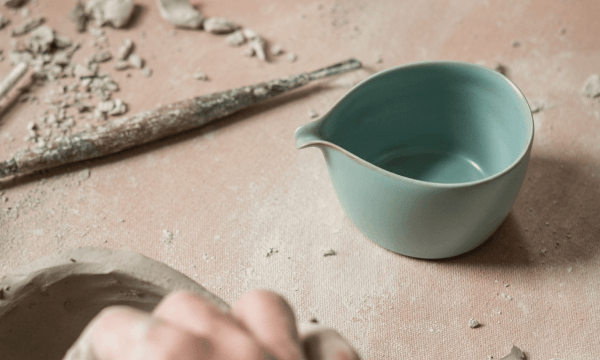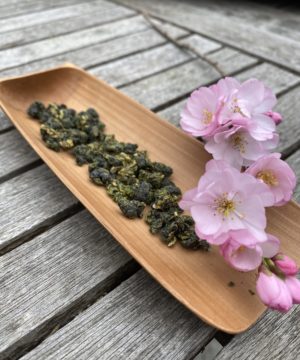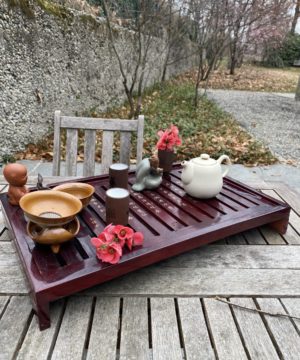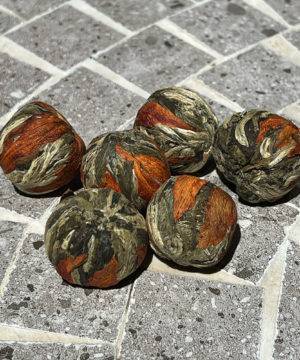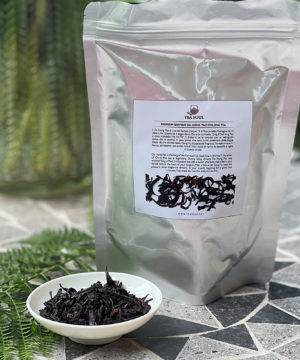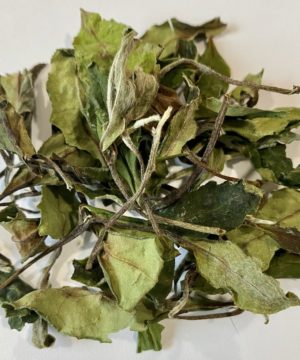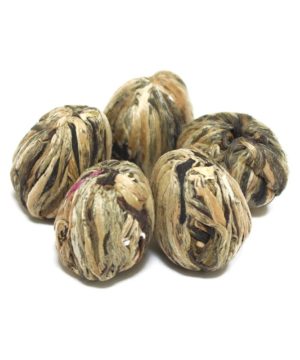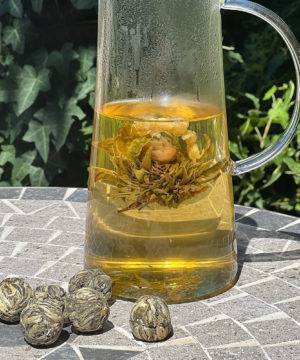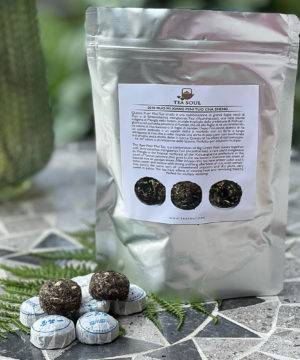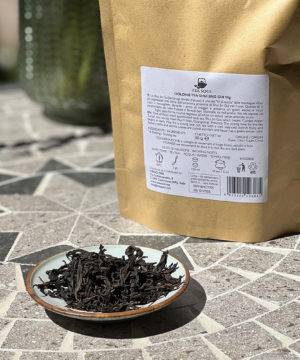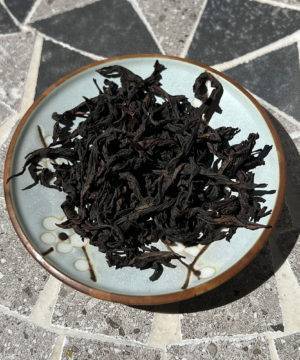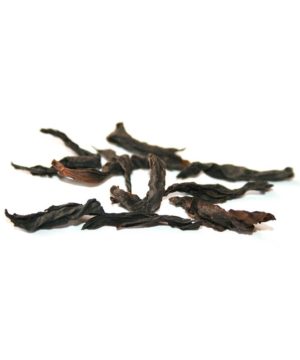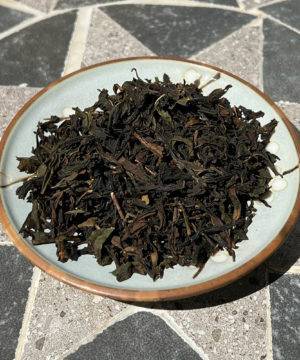

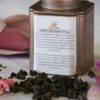
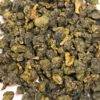
Jade Oolong Tea
15.00€ Taxes included
Jade oolong tea grows on the heights of Yunnan, where it benefits from a cool climate and nutrient-rich environment. The infusion that is obtained from its leaves, in fact, has an intense floral and creamy taste, enriched with notes of tropical fruits and a very well balanced sweetness.
SKU: te-oolong-jade
Categories: COLLECTIONS, Oolong Semi Fermented, Tea, Oolong tea, TrovaPrezzi
DON'T MISS DISCOUNTS AND NEWS!
Subscribe to our WhatsApp channel and receive all updates quickly and conveniently!
Subscribe to our WhatsApp channel and receive all updates quickly and conveniently!
Jade oolong is a low-oxidation oolong tea grown in mainland China at high altitudes. The gardens of origin of this tea are located in the Yunnan region, where the high reliefs of the area and the conservation of moisture by tropical vegetation allow to obtain perfect leaves to be processed as oolong tea.
Another particular feature of this tea is that the camellia cultivar from which it derives is Ruanzhi, native to the Anxi areas in Fujian where it is widely used in the production of partially oxidized teas.
The techniques used for the processing of these leaves, moreover, follow the principles in force on the island of Taiwan which makes the low-oxidation oolong, with the characteristic bulleted leaves, its flagship product. Given all these particular premises, even the flavor can not be less: the creamy body and the floral and exotic notes of this Jade oolong are reminiscent of the low-oxidation oolongs of Taiwan.
Tasting – Sight and smell
Oolong Jade Tea has shoots with large leaves and a bulleted shape, with different shades of green with beautiful chiaroscuro contrasts and ochre hues at the stems. On the nose, the wet leaves give off delicate plant aromas, floral notes and toasted notes reminiscent of walnuts and peanuts. The liqueur in the cup is light yellow, very bright: the body is oily and softly envelops the palate, without showing any trace of astringency.
Tasting Notes
GONG FU CHA
The first infusion of Oolong Jade Tea gives light floral notes reminiscent of magnolia and a very delicate and fresh vegetable taste, reminiscent of hay. With the second infusion, the buds begin to open more and also the taste becomes more intense: the notes of white flowers are now more present and you can perceive a vanilla sweetness reminiscent of custard. With the third infusion and the following ones, which always have floral notes well present, clear notes of tropical sweet fruit and slight vegetal hints now emerge: the body of the tea becomes even denser, recalling the sweetness and butteriness of butter cookies.
WESTERN
The first sip of Oolong Jade Tea brings out light vegetal scents, followed by more fruity notes that bring back exotic realities (pineapple). The tea is sweet and creamy on the palate: now you can also feel notes of butter and vanillin, while at the end you can feel notes of white flowers and monoi. The floral notes remain in persistence, together with a pleasant sugary sweetness.
Place of origin
Wuhe Mountain, Baoshan, Yunnan – China
Production
After harvesting, the leaves wither in the sun for a few hours before resting on indoor bamboo trays. Here it’s where the oxidation starts thanks to a manipulation of the leaves (the shaking) made by the tea master. Given the low oxidation of this oolong Jade (about 20%), it will take just a short time before the tea passes to the next phase, where the leaves are placed inside a charcoal-heated oven to block the enzymatic activity and fix the characteristics of the product. After this phase in the oven the final shape is given to the sprouts by hand, rolling them up on themselves and giving the classic shape of a small sphere so that all the aromas can be better preserved. Once the final drying phase is completed, which will allow to fix the shape of the leaves and aromas, the tea will be ready for consumption.
How to prepare
We strongly recommend infusing oolong Jade in the traditional Chinese method (gong fu cha) to best enjoy these leaves. Following this preparation you can use 5.5 grams of leaves (about 3 teaspoons) in a gaiwan of about 100 ml to obtain more infusions with different flavors. After a quick rinse of the leaves in water at 90°C, an initial infusion of 20 seconds can be made, after which, keeping the water at the same temperature, the time can be increased each time by 10 seconds compared to the previous infusion (20 – 30 – 40 …).
This tea has a longevity of about 6 brewings.
For a classic preparation according to the Western style we recommend 2 grams of leaves (approx. 1 teaspoon) in a 150 ml cup with water at 90°C for an infusion time of one and a half minutes.
If you want to try experimenting with infusions with this tea with different amounts of leaves, try to think of the appropriate amount to allow the leaf to expand freely into the liquid without being
compressed or hindered in this. By doing so, you will make the most of this product without hindering the extraction of flavour substances.
The tea can be filtered for greater ease at the moment of tasting, and also the infusion times indicated above are intended to be purely indicative, so you can also adjust according to your personal taste.
Store in a cool, dry place away from direct sunlight.
| Weight | 0.000000 g |
|---|---|
| Dimensions | 0.000000 × 0.000000 × 0.000000 cm |
| Detail - Temperature | 90°C |
| PACKAGE | 250 g, 50 g |
| Detail - Brewing | refreshing |
| Feature - Caffeine | Low caffeine |
| Preparation - Gaiwan | 5,5g-100ml / 20-30-40… sec / 6 brewings |
| Preparation - Mug | 2g-150ml / 90… sec / 2 brewings |
| Feature - Oxidation | Partial oxidation |
| Other - Origin | China |
| Other - Taste | vegetal |
| Other - Instants | Drink |
| Season |
 A very good quality tea with rich taste
A very good quality tea with rich taste  I like the taste of this Oolong. I have never had such good qualified tea. Thank you!
I like the taste of this Oolong. I have never had such good qualified tea. Thank you! Related products
10.40€ Taxes included
Earn up to 208 points.
This product has multiple variants. The options may be chosen on the product page
Fujian China
9.20€ Taxes included
Earn up to 81 points.
This product has multiple variants. The options may be chosen on the product page
15.00€ Taxes included
Earn up to 55 points.
This product has multiple variants. The options may be chosen on the product page
9.20€ Taxes included
Earn up to 41 points.
This product has multiple variants. The options may be chosen on the product page
9.20€ Taxes included
Earn up to 81 points.
This product has multiple variants. The options may be chosen on the product page
Puer Sheng Crudo
8.00€ Taxes included
Earn up to 30 points.
This product has multiple variants. The options may be chosen on the product page
Fujian China
13.90€ Taxes included
Earn up to 28 points.
This product has multiple variants. The options may be chosen on the product page
11.50€ Taxes included
Earn up to 42 points.
This product has multiple variants. The options may be chosen on the product page


 Italiano
Italiano Français
Français Deutsch
Deutsch